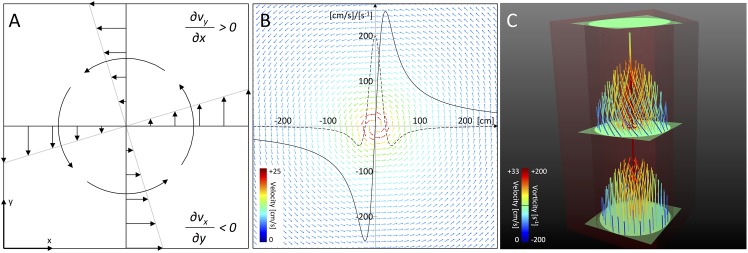Fig 1. Vorticity Calculation.

(A) Vorticity is defined as the curl of the velocity field (equal to (∂v y/∂x– ∂v x/∂y)e z in the two-dimensional case), describing the tendency of a single fluid element to spin around its axis (as shown for a counter-clockwise rotating vortex; figure similar to [5]). (B) Illustration of the velocity field defined by the Lamb-Oseen equation, giving a theoretical approximation of a planar vortex. The solid line denotes the tangential velocity profile, while the dotted line depicts its first derivative. Note the derivative’s maximum in the vortex center due to the sudden shift of velocity values. (C) Artificial sample data superimposing a planar vortex on the parabolic velocity profile through a simple tube. Note the vortical movement of pathlines in the middle of the tube, intersecting ROIs exhibiting vorticity values, and the correctly identified vortex core.
